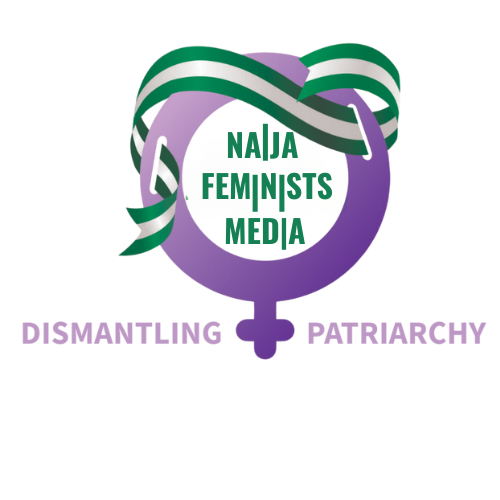|
Getting your Trinity Audio player ready...
|
‘Towards the Abolition of Surrogate Motherhood’ is a collection of extraordinary essays that together cover the harms of surrogacy from almost every possible angle. It was edited by Marie-Josephe Devillers and Ana-Luana Stoicea-Deram who co-founded the International Coalition for the Abolition of Surrogate Motherhood (ICASM), which is spearheading an international feminist resistance to the ever-expanding surrogacy industry.
It seems like surrogacy has gone from 0 to 100 in the blink of an eye. So we cannot afford to waste another day in getting to grips with its reality. As Renate Klein explains, it is now a huge and rapacious industry that’s projected to be worth 25.7 billion US dollars within another 18 months – with Big Pharma making further unspecified billions from associated IVF and other drugs and tests. It’s no surprise therefore that the mainstream media, given its dependence on Big Pharma advertising, should consistently present a misleading and rose-tinted picture of surrogacy. This book is therefore a godsend.
Silvia Guerini provides a passionate critique of the latest reproductive technologies. Her essay opens with an observation from Dr Alan DeCherney, an IVF pioneer, who compared them to the development of the atom bomb in the Manhattan Project – which brings home the gravity of what we are dealing with.
“The engineered and redesigned human being becomes a human commodity. In the age of its technical reproducibility, this human being is born as a commodity already produced by MAP [medically assisted procreation] and the genetic engineering industry. When procreation becomes a technical operation in a laboratory, bodies and living processes lose their unavailability for appropriation by the biomarket and techno-sciences. The embryo becomes the product, and what is a product can be subjected to any experimentation and manipulation. Genetic modification is a structural part of the laboratory environment and the artificial conception on which it is based.” [Page 92]
Laura Nuño Gómez discusses how surrogacy meshes with neoliberalism – which reduces everything to a commodity that can be bought and sold – and turns desires into needs and needs into “rights”. Buying anything is possible so long as there is an agreement in place, and this and payment absolves the buyer of all ethical responsibility.
She explains that although the exploitation of women’s reproductive functions has been the norm since the beginning of patriarchy, their commercialisation has not:
“What we are facing, then, is not only a new way of commodifying women’s bodies, but also a new mode of production that makes human beings available to the free market, thanks to the ‘productive force’ of thousands of wombs: the reproductive mode of production.” [Page 98]
British gay rights activist, Gary Powell, explains how the surrogacy industry is “galloping into Western statute books on the coattails of an aggressive and misogynistic LGBT+ lobby that no one is allowed to offend, upset or even question”.
Rita Banerji tells the shocking story of how Oprah Winfrey hosted a show in 2007 about surrogacy in India, which launched India as a major international surrogacy destination. As a result, within ten years its surrogacy industry grew to be worth $2.6 billion; the lure of obtaining a dirt-cheap baby overriding any concerns about the Indian surrogacy clinics being modelled on battery poultry farms, with the women literally locked up in crowded dormitories for nine months.
Things were so bad that India banned commercial surrogacy for foreigners in 2015 and in 2019 it banned all commercial surrogacy. The surrogacy profiteers then moved their attention to poor countries in Africa and elsewhere. Banerji concludes that:
“[G]iven the long dark tentacles of the surrogacy trade operating through a global, underground network, sharing the same routes as sex trafficking, […] the only way to stop surrogacy is through an international ban.” [Page 57]
Yoshie Yanagihara provides a fascinating history of traditional surrogacy systems in Japan, Korea and China – invariably involving lower-class women giving birth for upper-class people. These systems continued in various forms up until around the mid-20th century. Sadly, that wasn’t the beginning of a long period of ascendancy of women’s rights, because within decades the modern surrogacy industry burst upon the scene.
Yanagihara gives a fascinating insight into how feminist concepts and ideas are being distorted and used by men in Japan to extend men’s so-called rights.
There’s a brilliant chapter by Alexandra Clément-Saby that explores the cultural roots that make commercial surrogacy acceptable – in particular the enduring misconception that the power of reproduction was down to men, with women being seen only as the fertile ground in which the man’s seed takes root and grows.
She quotes the French anthropologist, Françoise Héritier:
“In many societies women are given the simple role of child bearer and may be referred to as bags, pouches, pots or saucepans.” [Page 43]
These attitudes started to change in the second half of the 20th century as, thanks to feminist activism, social and legislative developments led to women’s increased autonomy and a recognition that their bodies were not for the benefit of others, that “pregnancy could not be reduced to gestation, that pregnant women should no longer be considered nannies enabling others to become parents, or the state to have new citizens”. Alongside this, in many states abortion was legalised, rape was criminalised, and there was an end to the absolute power of fathers. But, she says:
“Surrogacy constitutes a break with these positive developments and is a step backwards. It is based on a context where every desire must be satisfied. However, it could not meet with such support within mainstream society were it not for its deeply rooted cultural and imaginary ideas.” [Page 45]
Phyllis Chesler reprises observations from her study of the Baby M case and is unequivocal that commercial surrogacy is “baby selling, baby buying, reproductive prostitution, and the commodification of women”. She says:
“Commercial surrogacy is essentially matricidal. Surrogacy has now become a way of slicing and dicing biological motherhood into three parts: an egg donor, who undergoes painful and dangerous IVF procedures; a ‘gestational’ mother who faces all the risks of pregnancy and childbirth; and an ‘adoptive’ mother or father.” [Page 65]
Melissa Farley connects commercial surrogacy and prostitution and debunks the much-repeated idea that women’s choice justifies both:
“[S]urrogacy and prostitution are alleged to be choices that provide economic benefits, made by individual women. The payment of money for surrogacy and prostitution is used to camouflage and disappear their harms. Men assume that women prefer exploitation to poverty.” [Page 107]
Taina Bien-Aimé discusses New York’s recent legislation legalising commercial surrogacy and draws parallels with America’s history of slavery and slavery’s role in its economic success. It’s no coincidence that a slave market operated in the 1700s where Wall Street now stands. This might seem like hyperbole until she reminds us of the particular value that female slaves’ sexual and reproductive functions had to that brutal system. How fast we are going backwards.
The recently discovered phenomenon of microchimerism is explained by Laura Isabel Gómez García. It is the transmission and exchange of cells and genetic material between the mother and foetus, creating an invisible bond between the mother and child that can last the entire lifetime of both of them, regardless whether the foetus developed from the birth mother’s egg or not.
In a chapter entitled, There is No Right to a Child, Eva Maria Bachinger continues the theme of the deep symbiosis between the mother and foetus. She shows that surrogacy is exploitation of women and a clear violation of the UN Convention on the Human Rights of the Child. She quotes neonatologist Georg Simbruner, who says:
“Modern epigenetics clearly shows that the surrogate mother has a particularly important influence on the future and the child’s life – independently of the genetic information written in the DNA.” [Page 135]
Catherine Lynch draws parallels with adoption. She explores the latest research on the harms of separating babies from their mothers and asks that knowing this, how can we create children with the deliberate intention of separating them at birth from their mothers? As a woman who was adopted as a child, she speaks with passion and powerful authority.
The book concludes with the text of the Feminist Convention for the Abolition of Surrogacy.
I hope that I have whetted your appetite for this important book. I haven’t covered everything: Gena Corea, the grand-mother of the resistance who, way back in the 1980s, predicted how things were going to go in her groundbreaking book, The Mother Machine, rails about “junk liberty”; and Marie-Josèphe Devillers provides a summary of the international surrogacy landscape.
Editor’s note: This story was first published by Nordic Model Now.





